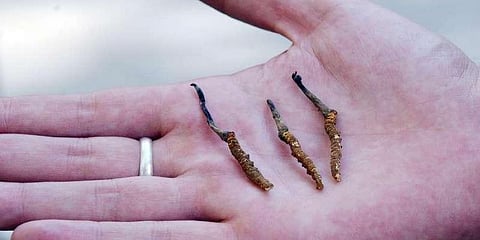

DEHRADUN: 'Himalayan Viagra' business worth over Rs 100 crore has been hit by Covid-induced restrictions in Uttarakhand.
The herb is found at an altitude of 12,000 feet onwards in Pithoragarh, Bageshwar, and Chamoli districts in Uttarakhand.
Sunil Kumar, forest range officer, Dharchula said, "The collection of the herb starts in April but due to lockdown, things could not set in motion leading to the said loss."
Many local families depend on revenue from the collection of the fungal herb. Hem Bhatt, a local researcher from Pithoragarh said, "On an average, a family earns around 2-5 lakh which helps them get through the rest of the year. However, there has been no collection this year due to Covid and lockdown and we are facing a financial crunch."
The collection of the valuable fungal herb also known as Keeda Jadi/Yartsa gunbu (Ophiocordyceps Sinensis) can fetch up to Rs 20 lakh per kilogram.
Earlier, on July 9 in a list released by the International Union for Conservation of Nature’s (IUCN) Red List of Threatened Species placed the fungal herb in the ‘vulnerable’ category.
In the same month, a study conducted by the Uttarakhand state forest department indicated that yield of the valuable fungal herb has drastically decreased from year 2010 to 2019.
The report states that in 2010, one person on average extracted 80 pieces of the herb per day in year 2010 which declined to 9 pieces per day in the year 2019.
The drastic increase in price of the fungi is also attributed to its decline. The average price in the year 2010 stood Rs 17.5 per piece which spiked to Rs 300 in the year 2016. For the year 2019, the prices stood Rs 2,00 per piece.
The study report is part of a 3-year research project which started in the year 2018 aiming to explore multiple factors related to the valuable herb including its growth, yield, life cycle, extraction, and effect of climate change.